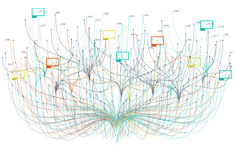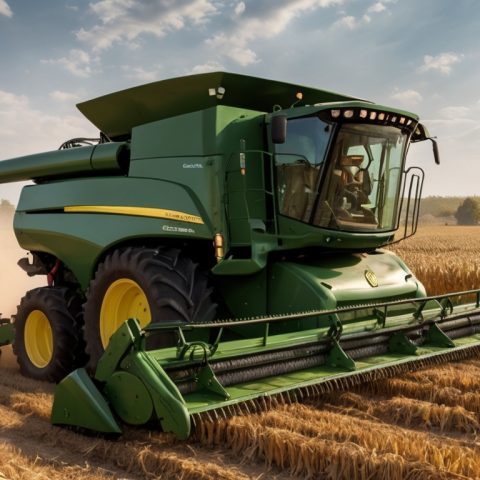Welcome back, my fellow thirsty for all things AI & Tech enthusiasts 🙂
Let’s face it: the world of agriculture is changing at breakneck speeds. Data has become as crucial as water and sunlight. But here’s the thing – raw data alone won’t cut it. The real game-changer? Effective data annotation. Data annotation in agriculture empowers you to add descriptive or explanatory notes to your raw agricultural data, making it more understandable and valuable. It’s not just a tool; it’s a source of control and confidence in your agri-food business, and today, we’re going to go over every acre of it. So, without further ado, let’s get cracking!
The Hidden Potential in Your Agricultural Data
If you’re like most folks in the Ag industry, you’re drowning in data. Soil sensors, satellite imagery, weather stations – the list goes on. But here’s the kicker: all that data is noise without proper annotation.
Think about it. How many times have you looked at a spreadsheet full of numbers and thought, “What am I supposed to do with this?” That’s where smart annotation comes in. It’s like turning on a light in a dark room – suddenly, everything becomes clear. Without proper annotation, you could be making decisions based on incomplete or misunderstood data, leading to potential crop failures, supply chain disruptions, or resource misallocation.
When done right, well-annotated agricultural data can help you:
1. Predict crop yields with uncanny accuracy
2. Spot pest outbreaks before they become a problem
3. Optimize your supply chain to reduce waste
4. Make informed decisions about resource allocation
Sounds good, right? But how do you get there? Let’s break it down.
Choosing Your Data Annotation Toolkit
Selecting the right tools for data annotation is crucial. It’s not just about fancy features – it’s about finding what works for your specific needs.
Ask yourself:
– What type of data are you dealing with most? Images? Text? Sensor readings?
– How large is your dataset? Are we talking about a few hundred entries or millions?
– What’s your team’s technical expertise?
Many agricultural businesses succeed with tools like CVAT for image annotation, Prodigy for text annotation, or Labelbox for multi-modal data annotation. But remember, the best tool is the one that fits your workflow like a glove.
Best Practices: Lessons Straight From The Field
Over the years, certain practices have consistently delivered results in agricultural data annotation.
Here Are SmartOneAI’s Top 5:
1. Create Crystal-Clear Guidelines
Ambiguity is the enemy of good data annotation. Imagine half your team labelling unripe tomatoes as “green” and the other half as “unripe.” Sounds trivial, but it can lead to weeks of rework.
Develop a detailed style guide for your annotation project. For example:
– Label all visible produce, regardless of ripeness stage
– Use rectangular bounding boxes covering at least 90% of the item
– For partially obscured items, estimate the total size based on a visible portion
2. Prioritize Data Quality
Insufficient data can have real-world consequences in agriculture. For example, imagine making a pesticide decision based on faulty pest identification data—the results could be disastrous, leading to crop loss and financial strain. This is why it’s crucial to ensure your data is of the highest quality through effective annotation.
To maintain high data quality:
– Implement a two-stage annotation process with different annotators
– Conduct regular spot-checks on annotated data
– Provide ongoing training and feedback to your annotation team
3. Account for Nature’s Variability
Agriculture isn’t a controlled lab environment. Your data annotation strategy needs to reflect the messy reality of nature.
For instance, when annotating crop disease symptoms, ensure your dataset includes:
– Images from different growth stages
– Varied lighting conditions (cloudy days, bright sunlight)
– Multiple disease progression stages
4. Strive for a Balanced Dataset
Focusing on perfect specimens is tempting but different from real-world conditions. Your dataset should include:
– A mix of healthy and diseased plants
– Various soil types and conditions
– Different weather scenarios
5. Respect Data Privacy
Farmers trust us with sensitive information. It’s our responsibility to handle it with care. When dealing with data that could reveal farm locations or crop yields:
– Implement robust anonymization techniques
– Use data aggregation where possible
– Always obtain necessary permissions before sharing data
Real-World Impact: The Smart Irrigation Project
Let’s look at a project that brings these principles to life. Picture a 1000-acre farm grappling with water management issues. They implemented an intelligent irrigation system using annotated data.
Here’s how it worked:
1. They annotated multispectral satellite images to identify crop types and growth stages.
2. Soil moisture sensor data was labelled to create a detailed water needs map.
3. They then trained an AI model to predict optimal irrigation schedules.
The outcome? A 30% reduction in water usage and a 15% bump in crop yield. That’s the tangible impact of well-executed data annotation.
Pitfalls to Watch Out For
Even seasoned professionals can stumble. Here are some common missteps to avoid:
1. Overlooking edge cases: Remember to annotate rare events. That unusual weather pattern might be the key to understanding crop resilience.
2. Ignoring context: An image of a brownfield could indicate drought or harvest time. Always consider the bigger picture.
3. Inconsistent labelling: Ensure all annotators are on the same page. Regular calibration sessions help maintain consistency.
Emerging Trends in Agri-Data Annotation
As we look to the future, several exciting developments are on the horizon, promising growth and improvement in agricultural data annotation. The potential for growth and progress is vast, and it’s this optimism that will drive us forward in the field of agri-data annotation.
– AI-assisted annotation is becoming more sophisticated, potentially reducing manual labour significantly.
– We’re seeing more integration of multi-modal data, combining imagery, sensor data, and textual information for richer insights.
– Real-time annotation capabilities are emerging, enabling immediate decision-making in the field.
The key to staying ahead is adaptability. The tools we use today may be obsolete tomorrow, so continuous learning is crucial.
Your Next Steps: From Insight to Action
Feeling overwhelmed? Don’t worry. Every expert was once a beginner. Here’s a practical action plan to get you started:
1. Assess your current data collection methods. What are you missing?
2. Choose an annotation tool that fits your needs and budget.
3. Develop clear, comprehensive annotation guidelines.
4. Train your team on best practices.
5. Start with a small pilot project to test your approach.
6. Analyze your results and refine your process.
Remember, the goal isn’t perfection from day one. It’s about continuous improvement. Each dataset you annotate brings you closer to unlocking the full potential of your agricultural data.
Are you ready to transform your raw data into actionable insights? The field is ripe with opportunity, and the guidelines we discussed today will equip you to reap the benefits.
Let’s continue this conversation and grow our collective knowledge. What challenges have you faced with data annotation in agriculture? What successes have you had? Please feel free to share your experiences and help us push the Ag industry forward together. Still have questions? No problem. Feel free to reach out to us anytime; we’re always happy to chat. Or perhaps you’re looking to streamline your organization’s AI needs by way of an industry-leading partner? If so, we invite you to check out SmartOneAI’s comprehensive suite of services, ranging from our standout Data Annotation Services all the way to our 3D Point Cloud Annotation for LIDAR Technology Services. Discover what our partners already know when it comes to helping get their organization to the next level!










